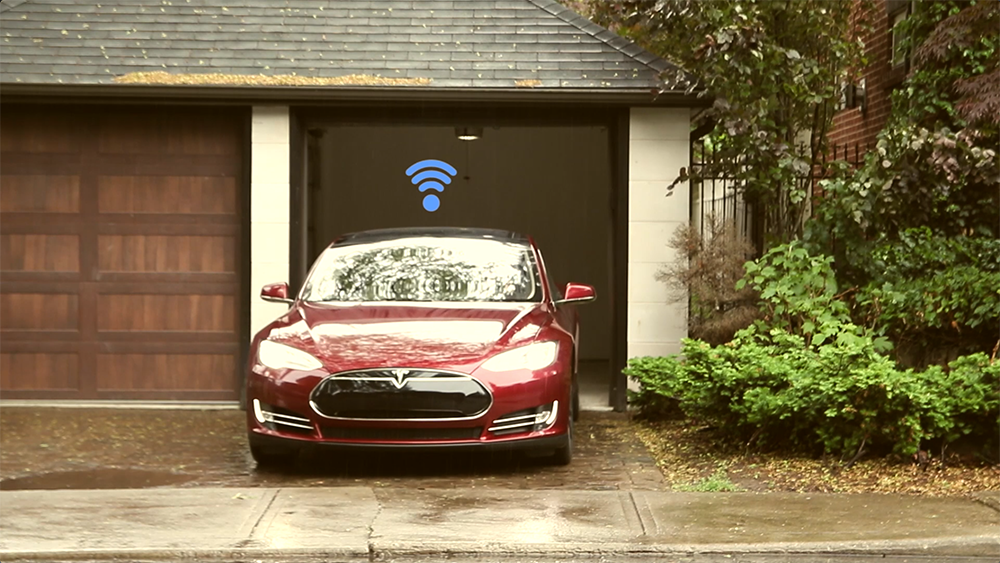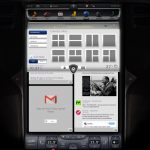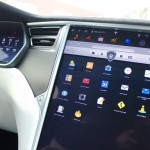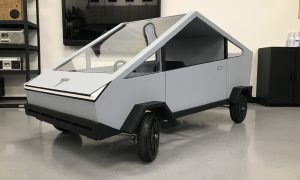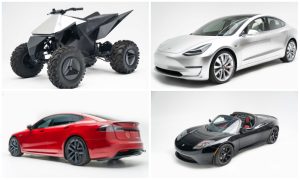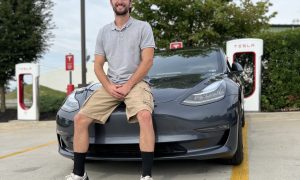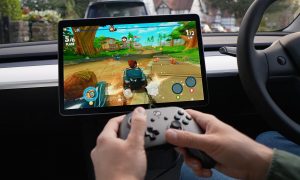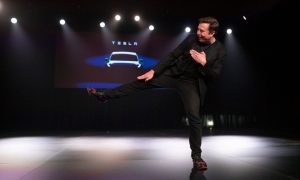Lifestyle
Why your Tesla can become the ultimate ‘Connected Car’

Techies have dreamed of the day when their cars would be as advanced as their personal computing and smartphone devices. Daily use of technology has shifted beyond being the norm to being a necessity. It’s evolved into a digital lifestyle that has extended into vehicular use.
With the launch of the Model S in 2012, Tesla set the benchmark for what the connected car could be. Besides being an amazing, all-electric vehicle with outstanding performance, utility, and good looks, it also incorporates internet technology into the vehicle, cabin and driving experience like never before. A Tesla Model S or Model X provides drivers with the ‘potential’ to carry their digital lifestyle into the vehicle.
Follow along in our upcoming series that will explore the evolving connected car industry and its future possibilities. We’ll cover topics such as how these next generation vehicles might incorporate our digital lifestyles, what the cyber security implications are, how our city’s infrastructure may evolve in response, and how autonomous vehicles will change our society.
So what is a Connected Car?
Because this is an evolving industry, there really isn’t a clear, universal definition for the “connected car.” Technological innovation is happening so quickly, there seems to be no limit on what it could be. Some automotive manufacturers are selling ‘connected cars’ that are simply connected to the internet on their own cellular connection. But internet enabled features are limited. While this may be technically accurate, a connected car needs to be more than just a WiFi hotspot.
At its most basic level, a connected car should have the following attributes:
- It must be connected to the internet at all times
- It must be able to function as a participant in our digital lifestyle similar to an internet of things (IoT) or smart home device
- It must allow the user to interact with their digital lifestyle in a functional and usable way
How automakers are trying to build the Connected Car
Connected car technology is currently being implemented using one of two emerging approaches. The first is simply to project smartphone apps onto a screen in the dashboard. This solution works by running the app on your smartphone but displaying the interface on your vehicle dashboard. The app cannot function without the smartphone and typically has limited or no access to vehicle information. While projected apps can work for things like text messaging and streaming audio apps, they don’t work without the presence of the smartphone and therefore limit the vehicle’s ability to be a full participant in the Internet of Things. Additionally, these apps are generally not designed well for use in a vehicle.
The second is to have embedded apps, or apps that run in the vehicle itself. This solution works by having apps installed or running in the vehicle, similar to tablet or smartphone apps. The advantage is that the apps run independently of a smartphone, can securely access vehicle data, and in special cases can even perform vehicle functions remotely such as closing the sunroof. These advantages mean that the vehicle has the potential to be a full participant in the Internet of Things. Additionally, these apps are designed specifically for in-vehicle use, with display and user interfaces (ie. buttons, colours, text size, etc.) optimized for in-car use.
A third approach worth considering is a hybrid of these two, where the in-vehicle experience can function independently from a smartphone, but can also incorporate data from and interact with a smartphone. This would allow functionality such as text messaging and email to work off the smartphone, while embedded apps could perform more advanced, vehicle specific and independent functionality. Another advantage of a hybrid solution is that it could maintain a unified interface experience that is appropriate to in-vehicle use and look like it was designed for the specific vehicle — as opposed to an iPad stapled to the dashboard.
“we think a Tesla is the coolest mobile device, ever! (almost)”
This leads us to why we think a Tesla is the coolest mobile device, ever! (almost)
My Tesla has the potential to do so much more
Because of its independent internet connectivity, the Tesla Model S and X offer opportunities to control the vehicle from other internet connected devices. Tesla offers a smartphone app that allows you to control some of the vehicle functions such as charging, air conditioning, and now even parking and summon (on vehicles with Autopilot). And Tesla vehicles receive regular software updates over the air, adding and improving functionality over time. In-vehicle software includes Internet radio, Google Maps (with navigation), and limited integration with your personal calendar that will display your next couple of appointments.
Still, there is much more that can be done with the technology. At least that’s how I felt when I took delivery of my Model S in 2012. At that time there was a lot of talk about in-vehicle apps becoming available, and there was even an app icon in the centre console interface. Unfortunately we are still waiting for Tesla to release an SDK. That being said, Tesla is pretty busy with their Gigafactory, Model 3, Autopilot, and generally steering the whole automotive industry toward electrification.
Although Tesla hasn’t released an SDK or third party app development, and new Tesla-developed apps have been limited, Tesla did include a Web browser as a key feature to their large centre console dash. And that web browser has opened up a host of possibilities for connected car features and interface development. It was the inspiration for my team at Evolved Vehicle Environments to create EVE for Tesla, a growing connected car platform that already incorporates many of the features you might expect in a connected car.
EVE for Tesla for the Model S, Model X
Finally, you can have access to your calendar, email, social media, news, and more in your car – provided that car is a Tesla! And with EVEConnect, a feature available to paid members, your Tesla has officially become a full participant in the Internet of Things. It can receive messages, trigger events, and even talk to your home. And with the recently released EVE for Tesla IFTTT channel, you can now connect your Tesla to over 300 products and services.
In our next post, we will explore the development of the Internet of Things, the connected home market, and connected car/connected home integration. If you have any questions you’d like us to address, please drop us a comment below.
-Jason Taylor
Lifestyle
EV fans urge Tesla to acquire Unplugged Performance for edge in fleet and security industry
Unplugged Performance has built a name for itself by producing performance upgrades for Tesla vehicles.

A growing number of Tesla enthusiasts and longtime community voices are calling on the electric vehicle maker to acquire Unplugged Performance, a California-based aftermarket company best known for tuning Tesla vehicles and developing specialized government fleet solutions under its UP.FIT division.
The idea was once considered a niche proposal among EV fans, but it is now gaining serious attention not just as a performance play but as a strategic move to deepen Tesla’s roots in the fleet and security industry.
A strategic fit
Unplugged Performance has built a name for itself by producing performance upgrades for Tesla vehicles, from track-optimized components to visual and aerodynamic upgrades. But in recent years, its UP.FIT division has pivoted toward a more functional future by outfitting Tesla vehicles like Model Ys for police, military, and government use.
That work has sparked growing calls for closer collaboration with Tesla, especially as the EV maker increasingly leans into autonomy, AI, and fleet services as core components of its next chapter.
“I posted this four years ago, but I think it’s more true now than ever,” wrote Whole Mars Catalog, a well-known Tesla investor and FSD Beta tester, on X. “Tesla should buy Unplugged. But not just as a Performance division. What they are doing with UP.FIT unlocks large government and commercial fleet purchases that can improve utilization.”
Tesla fans such as shareholder Sawyer Merritt echoed the sentiment, calling Unplugged a “great fit within Tesla.” adding, “They are literally located directly next to Tesla’s design studio in Hawthorne.”
Enabling the next wave
Supporters of the idea noted that integrating Unplugged into Tesla’s corporate structure could help accelerate the adoption of autonomous technologies in government sectors. With UP.FIT patrol cars already in use across some U.S. police departments, Tesla fans envisioned a future where self-driving Teslas could potentially revolutionize law enforcement, search-and-rescue, and public service logistics.
“Just imagine how autonomous patrol cars could transform policing and bring us into a safer future,” the veteran FSD tester wrote.
The benefits could also extend to Tesla’s existing consumer base. “They also have some incredible products in the works that I think will appeal to many ordinary Tesla drivers — not just those looking for performance or mods. Stuff that’s so good it should have come straight from the design studio next door,” Whole Mars Catalog noted.
Unplugged Performance, founded in 2013, shares not just a product vision with Tesla, but also geography. Its Hawthorne headquarters sits directly adjacent to Tesla’s design studio, and the two companies have maintained a close working relationship over the years. The aftermarket firm has long positioned itself as a “mission-aligned” partner to Tesla.
In response to the recent calls for acquisition, Unplugged Performance acknowledged the support from the community. “Our very existence is to support the Tesla mission with @UpfitTesla and @UnpluggedTesla,” Unplugged CEO Ben Schaffer posted on X. “We love working with Tesla and are grateful for the community’s support since 2013!”
Elon Musk
X account with 184 followers inadvertently saves US space program amid Musk-Trump row
Needless to say, the X user has far more than 184 followers today after his level-headed feat.

An X user with 184 followers has become the unlikely hero of the United States’ space program by effectively de-escalating a row between SpaceX CEO Elon Musk and President Donald Trump on social media.
Needless to say, the X user has far more than 184 followers today after his level-headed feat.
A Near Fall
During Elon Musk and Donald Trump’s fallout last week, the U.S. President stated in a post on Truth Social that a good way for the United States government to save money would be to terminate subsidies and contracts from the CEO’s companies. Musk responded to Trump’s post by stating that SpaceX will start decommissioning its Dragon spacecraft immediately.
Musk’s comment was received with shock among the space community, partly because the U.S. space program is currently reliant on SpaceX to send supplies and astronauts to the International Space Station (ISS). Without Dragon, the United States will likely have to utilize Russia’s Soyuz for the same services—at a significantly higher price.
X User to the Rescue
It was evident among X users that Musk’s comments about Dragon being decommissioned were posted while emotions were high. It was then no surprise that an X account with 184 followers, @Fab25june, commented on Musk’s post, urging the CEO to rethink his decision. “This is a shame this back and forth. You are both better than this. Cool off and take a step back for a couple days,” the X user wrote in a reply.
Much to the social media platform’s surprise, Musk responded to the user. Even more surprising, the CEO stated that SpaceX would not be decommissioning Dragon after all. “Good advice. Ok, we won’t decommission Dragon,” Musk wrote in a post on X.
Not Planned, But Welcomed
The X user’s comment and Musk’s response were received extremely well by social media users, many of whom noted that @Fab25june’s X comment effectively saved the U.S. space program. In a follow-up comment, the X user, who has over 9,100 followers as of writing, stated that he did not really plan on being a mediator between Musk and Trump.
“Elon Musk replied to me. Somehow, I became the accidental peace broker between two billionaires. I didn’t plan this. I was just being me. Two great minds can do wonders. Sometimes, all it takes is a breather. Grateful for every like, DM, and new follow. Life’s weird. The internet’s weirder. Let’s ride. (Manifesting peace… and maybe a Model Y.)” the X user wrote.
Lifestyle
Tesla Cybertruck takes a bump from epic failing Dodge Charger
The Cybertruck seemed unharmed by the charging Charger.

There comes a time in a driver’s life when one is faced with one’s limitations. For the driver of a Dodge Charger, this time came when he lost control and crashed into a Tesla Cybertruck–an absolute epic fail.
A video of the rather unfortunate incident was shared on the r/TeslaLounge subreddit.
Charging Charger Fails
As could be seen in the video, which was posted on the subreddit by Model Y owner u/Hammer_of_something, a group of teens in a Dodge Charger decided to do some burnouts at a Tesla Supercharger. Unfortunately, the driver of the Charger failed in his burnout or donut attempt, resulting in the mopar sedan going over a curb and bumping a charging Cybertruck.
Ironically, the Dodge Charger seemed to have been parked at a Supercharger stall before its driver decided to perform the failed stunt. This suggests that the vehicle was likely ICE-ing a charging stall before it had its epic fail moment. Amusingly enough, the subreddit member noted that the Cybertruck did not seem like it took any damage at all despite its bump. The Charger, however, seemed like it ran into some trouble after crashing into the truck.
Alleged Aftermath
As per the the r/TeslaLounge subreddit member, the Cybertruck owner came rushing out to his vehicle after the Dodge Charger crashed into it. The Model Y owner then sent over the full video of the incident, which clearly showed the Charger attempting a burnout, failing, and bumping into the Cybertruck. The Cybertruck owner likely appreciated the video, in part because it showed the driver of the Dodge Charger absolutely freaking out after the incident.
The Cybertruck is not an impregnable vehicle, but it can take bumps pretty well thanks to its thick stainless steel body. Based on this video, it appears that the Cybertruck can even take bumps from a charging Charger, all while chilling and charging at a Supercharger. As for the teens in the Dodge, they likely had to provide a long explanation to authorities after the incident, since the cops were called to the location.
-

 Elon Musk2 weeks ago
Elon Musk2 weeks agoTesla investors will be shocked by Jim Cramer’s latest assessment
-

 News2 days ago
News2 days agoTesla debuts hands-free Grok AI with update 2025.26: What you need to know
-

 Elon Musk4 days ago
Elon Musk4 days agoxAI launches Grok 4 with new $300/month SuperGrok Heavy subscription
-

 Elon Musk6 days ago
Elon Musk6 days agoElon Musk confirms Grok 4 launch on July 9 with livestream event
-

 News1 week ago
News1 week agoTesla Model 3 ranks as the safest new car in Europe for 2025, per Euro NCAP tests
-

 Elon Musk2 weeks ago
Elon Musk2 weeks agoxAI’s Memphis data center receives air permit despite community criticism
-

 News4 days ago
News4 days agoTesla begins Robotaxi certification push in Arizona: report
-

 Elon Musk2 weeks ago
Elon Musk2 weeks agoTesla scrambles after Musk sidekick exit, CEO takes over sales

